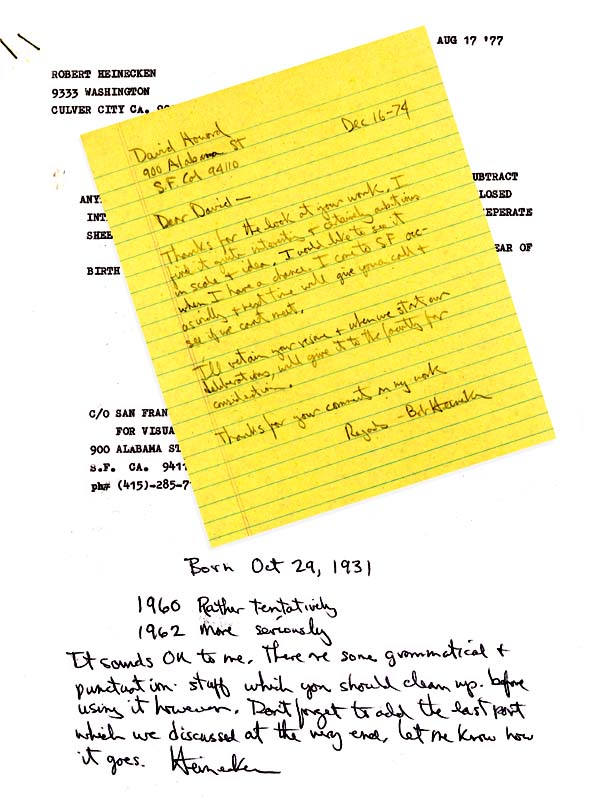
ROBERT HEINECKEN: BORN 1931 STARTED PHOTOGRAPHY 1960
QUESTION #1 DH: How do you feel photography, in your life time, has changed?
ANSWER RH: Prior to the time I began making photographs (in the 60’s) and incorporating them into etching and other print mediums, I wasn’t really conscious of photography. I probably was no more conscious than the average person. I wasn’t aware of the significant changes that had gone on prior to that time. I simply wasn’t interested.
I think everyone was aware of “life” magazine, and that kind of photography, but before I began making photographs I wasn’t conscious of photography as an art form at all!
QUESTION #2 DH: How did photography change after you go involved with it?
ANSWER RH: Well, during that period of time, there has been a really interesting multiplication in photographic ideas that weren’t present initially in the early sixties, such as language in art, which is a fairly recent idea or the whole approach to creating photography from a sociological; sub culture idea. There’s a lot of interesting photographic work about various sub cultures now. Photography is also seen more and more in conceptual form now, as opposed to physical form. The expansion, in the very short period of time that I have been involved, is remarkable!